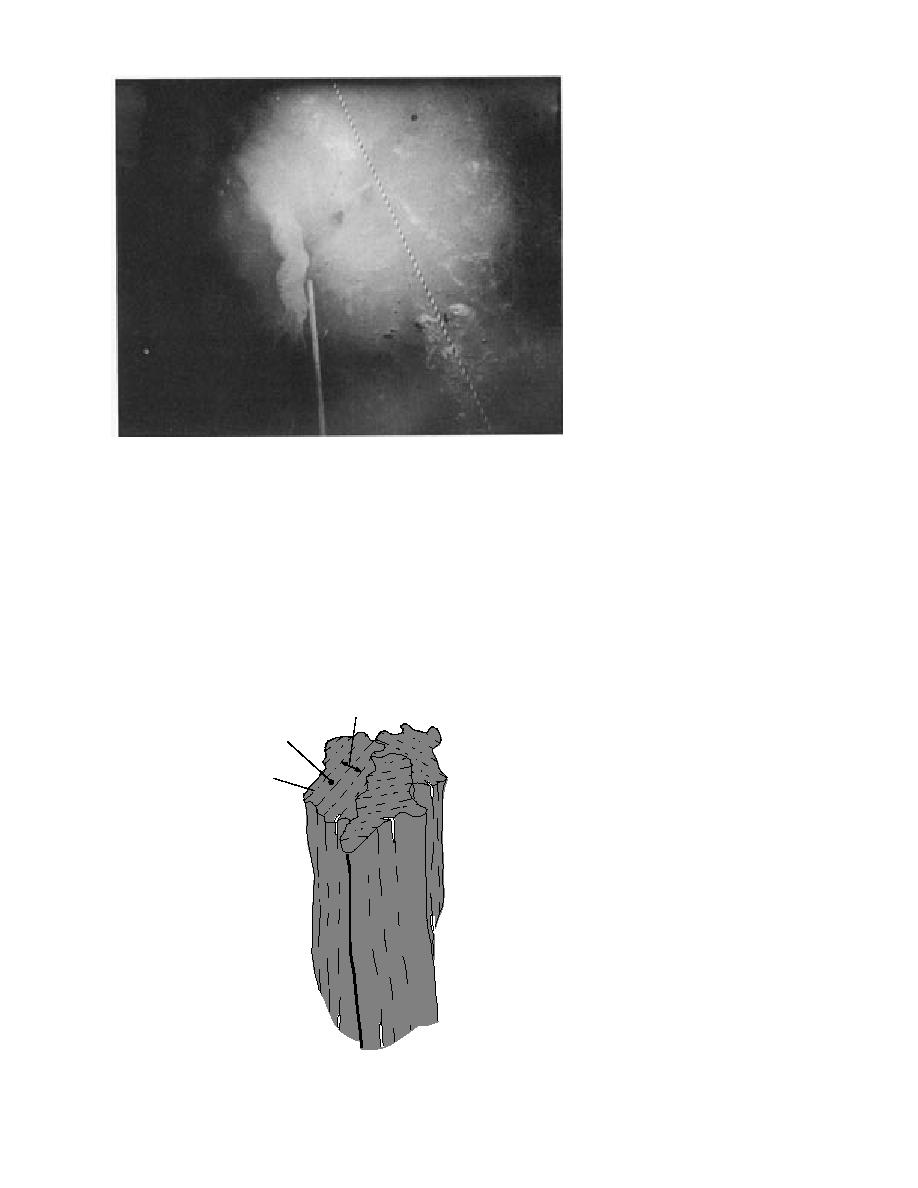
Figure 3. Over 1-m-long stalactite
that formed as a result of cold brine
drainage into the sea at the bottom
of an ice floe.
platelet growth and therefore crystal fabric orien-
on occasion can extend up to 6 m below the bot-
tation occurs, in which the horizontal c-axes of
tom of the sea ice (Page 1970, Dayton and Martin
the ice crystals become aligned with the current
1971, Martin 1974, Lewis and Milne 1977,
(Kovacs and Morey 1978, Weeks and Gow 1978,
Grishchenko 1988).
1979; Langhorne and Robinson 1986). The signifi-
As reported in Kovacs and Morey (1980), the
cance of this alignment is that it renders the ice
growth of congelation sea ice in calm water re-
sults in a structure in which the c-axes of the
sheet horizontally anisotropic, and this in turn
affects the electromagnetic (Campbell and Orange
crystals are randomly oriented in the horizontal
1974; Kovacs and Morey 1978, 1979; Morey et al.
plane. This is depicted in Figure 4. However, if a
1984) and mechanical (Anderson 1963, Payton
current exists under the ice sheet, selective ice
1966, Wang 1979, Timco et al. 1991, Kovacs 1993)
properties of the ice. Many other investigators
have observed preferred c-axis alignment in sea
C-axis
Orientation
ice. Perhaps most notable is Cherepanov (1975),
Parallel Fresh Ice
who made wide-area sea-ice observations in the
Platelets
seas north of Russia, and, more recently, Gow et
Brine and Gas
al. (1982), who verified that similar sea-ice c-axis
Pockets
alignment occurs in Antarctic congelation sea ice.
While the above description of first-year sea-
ice growth does not encompass the many struc-
ture variations that can occur due to such factors
as snow loading and flooding, thick frazil-ice
components (e.g., Cherepanov and Kozlovskiy
1973a,b; Martin 1981; Gow et al. 1987), and large
interlaced ice platelet layers, as found, for ex-
ample, in Antarctic sea ice (e.g., Cherepanov and
Kozlovskiy 1973a, Dieckmann et al. 1986, Eicken
and Lange 1989, Jeffries and Weeks 1993), it does
Figure 4. Three columnar sea-
reveal that sea ice is a multicomponent material.
ice crystals with unaligned c-
It is composed of fresh ice, brine, and gas inclu-
axes. The crystal boundaries
sions and solid salt crystals (Sinha 1977, Marion
are highly irregular.
and Grant 1994). The volume of fresh ice is by far
3




 Previous Page
Previous Page
